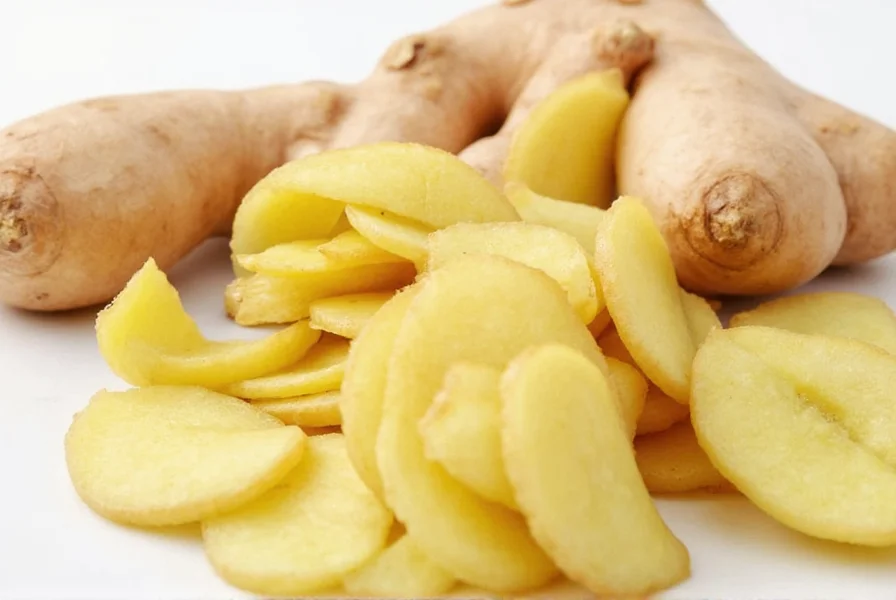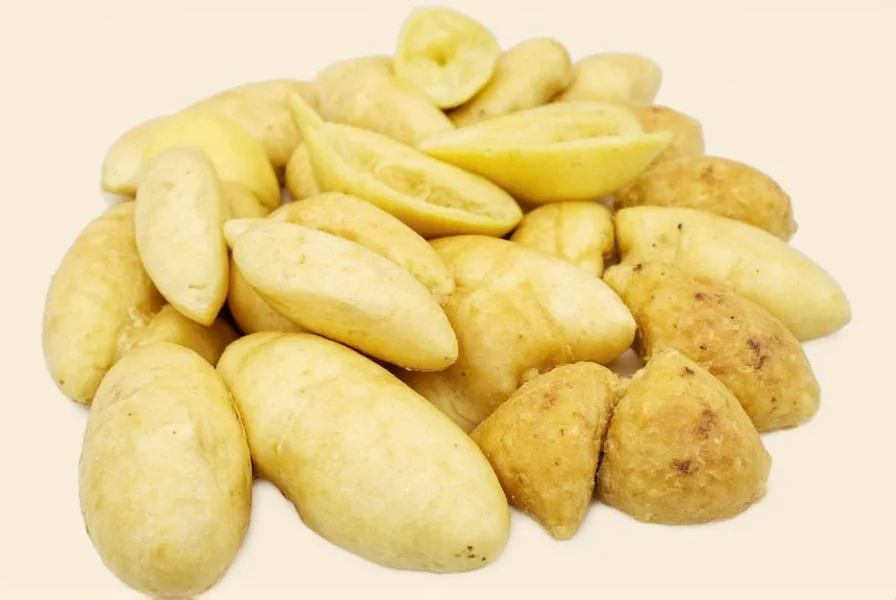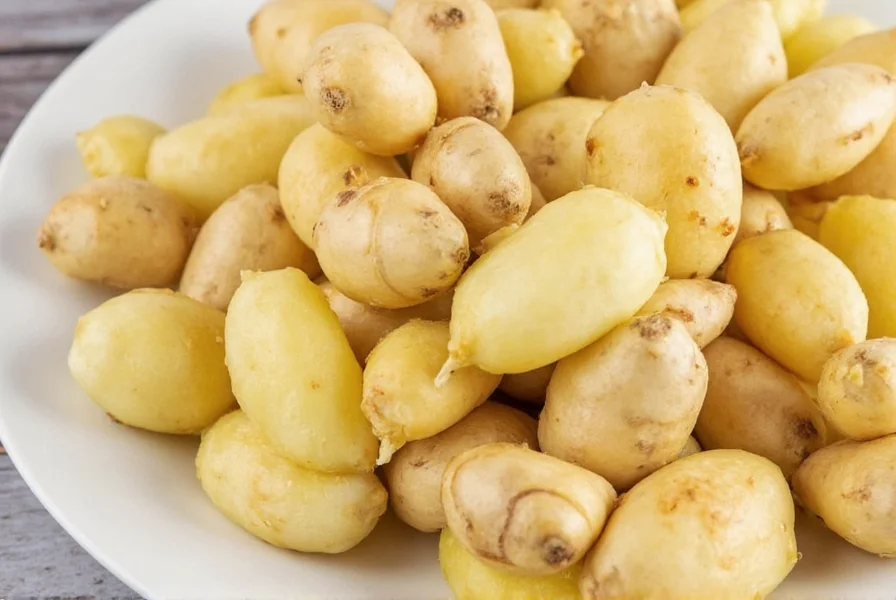Understanding whether do you have to peel ginger root is one of those kitchen questions that can save you time and reduce food waste. The simple answer is no—peeling isn't always required. However, the decision depends on several factors that affect both flavor and texture in your dishes.
When Peeling Ginger Is Necessary
Mature ginger root, typically found in most grocery stores, develops a thick, papery skin as it ages. This outer layer can be:
- Tough and fibrous, affecting texture in delicate dishes
- Bitter in flavor compared to the tender flesh beneath
- Difficult to chew in raw applications
For recipes where texture matters—like stir-fries, salads, or fresh juices—removing the skin ensures a more pleasant eating experience. This addresses the common concern about is ginger skin edible in various culinary contexts.
When You Can Skip Peeling
Young ginger, often available at Asian markets or farmers' markets, has a much thinner skin that's completely edible. If you're using ginger in:
- Long-simmered soups or stews
- Teas or infusions
- Recipes where ginger will be strained out
You can often skip peeling without compromising your dish. This answers the practical question of how to clean ginger without peeling—simply scrub thoroughly with a vegetable brush under cold water.
| Preparation Method | Best For | Time Required |
|---|---|---|
| Peeling with spoon | All ginger types | 1-2 minutes |
| Scrubbing without peeling | Young ginger, teas, stocks | 30 seconds |
| Grating with skin | Small quantities, baked goods | 1 minute |
Best Methods for Preparing Ginger
When peeling ginger root preparation techniques matter for efficiency:

The Spoon Method (Most Efficient)
Using the edge of a spoon to scrape away the skin wastes less flesh than a vegetable peeler and works well even on knobby pieces. This addresses the common query about the peeling ginger with a spoon method.
Grating Directly
For recipes calling for grated ginger, you can often grate right through the skin, especially with younger ginger. The small amount of skin incorporated won't affect most dishes.
Nutritional Considerations
Many wonder about ginger skin nutrition facts. While most nutrients concentrate in the flesh, the skin does contain some beneficial compounds. However, the difference is minimal—peeling removes only about 5-10% of the total nutrients.
Storage Tips for Ginger
Proper storage affects whether you should peel ginger in advance:
- Unpeeled ginger lasts longer—up to 3 weeks refrigerated in a paper bag
- Peeled ginger should be stored in vodka or sherry in the refrigerator
- Freeze whole unpeeled ginger for long-term storage
This information helps answer the related question about how to store fresh ginger root properly based on your preparation method.
Common Misconceptions
Several myths persist about ginger preparation:
- Misconception: All ginger skin is toxic or harmful
Reality: Ginger skin is completely safe to eat when properly cleaned - Misconception: Peeling removes all beneficial compounds
Reality: Most active compounds are concentrated in the flesh - Misconception: Organic ginger never needs peeling
Reality: Organic status affects pesticide exposure but not skin texture
Recipe-Specific Recommendations
The decision to peel often depends on your specific application:
- For ginger tea: Scrub well but no need to peel—skin adds depth to the flavor
- For sushi ginger: Always peel for the proper delicate texture
- For baked goods: Grate with skin for maximum flavor infusion
- For stir-fries: Peel mature ginger but young ginger can be used unpeeled
Understanding when to peel ginger for recipes ensures optimal results in your cooking.
Environmental Consideration
Reducing food waste by skipping unnecessary peeling aligns with sustainable cooking practices. When you understand that do you need to peel young ginger isn't always necessary, you're making a small but meaningful contribution to reducing kitchen waste.

Final Recommendation
The answer to whether you must peel ginger root depends on your specific situation. For most home cooking applications with mature ginger, peeling improves texture without significantly affecting flavor. With young ginger or in liquid-based recipes, thorough cleaning without peeling works perfectly well. The key is matching your preparation method to your recipe's requirements.
Can you eat ginger skin?
Yes, ginger skin is completely edible, especially on young ginger with thin skin. For mature ginger with thicker skin, the skin is safe to eat but may be fibrous and affect texture in some dishes. Always wash ginger thoroughly before using with skin on.
How do you clean ginger without peeling it?
To clean ginger without peeling, use a soft vegetable brush under cold running water to remove dirt from the crevices. For extra cleanliness, you can briefly soak ginger in a water-vinegar solution (1 part vinegar to 3 parts water) before scrubbing. This method works best for young ginger with thin skin.
Does peeling ginger remove nutrients?
Peeling removes only a small percentage (approximately 5-10%) of ginger's nutrients, as most beneficial compounds are concentrated in the flesh rather than the skin. The primary reason to peel is for texture improvement rather than nutritional concerns. If maximizing nutrient retention is your goal, using young ginger with minimal peeling is ideal.
What's the fastest way to peel ginger?
The fastest method for peeling ginger is using the edge of a spoon. Simply scrape the spoon against the ginger's surface—the concave shape follows ginger's contours better than a peeler and removes less flesh. This technique, known as the spoon method, works particularly well on knobby pieces and reduces waste compared to traditional peelers.
Should you peel organic ginger?
Organic status doesn't determine whether you should peel ginger. Organic ginger may have less pesticide residue, but the decision to peel should be based on the ginger's age (young vs. mature) and your recipe requirements. Young organic ginger typically doesn't need peeling, while mature organic ginger might for texture reasons, just like conventionally grown ginger.











 浙公网安备
33010002000092号
浙公网安备
33010002000092号 浙B2-20120091-4
浙B2-20120091-4